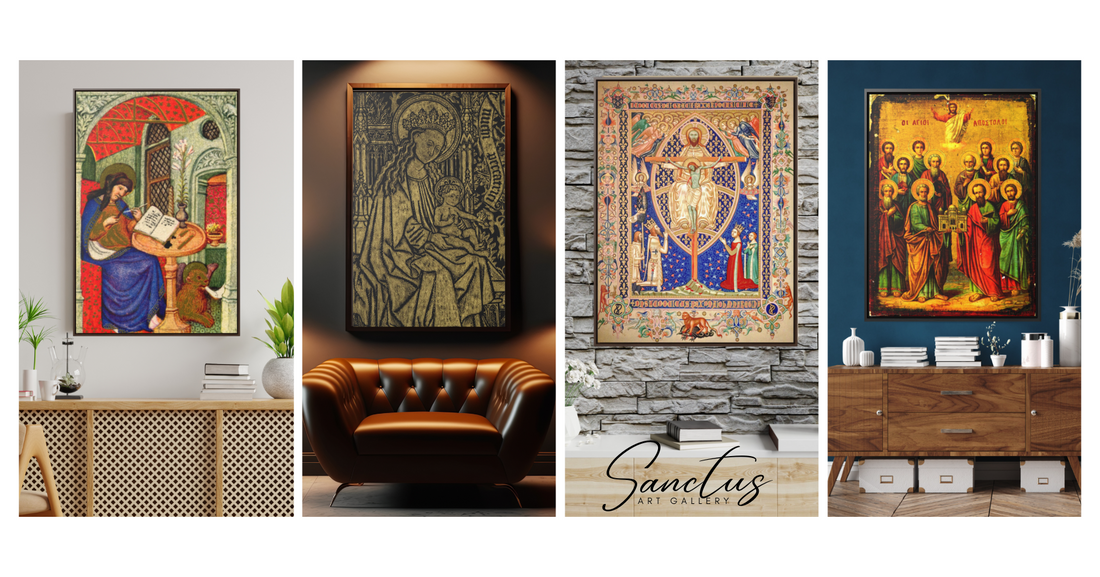Christian art is a remarkable tapestry woven over the course of two millennia, representing a mere glimpse into its vast and expansive history. As a collector, admirer, and artist, I acknowledge that my understanding of Christian art is limited, as I am not an art historian. It is crucial to recognize that the world of Christian art surpasses the boundaries of this article. For those who wish to delve deeper, exploring this rich artistic heritage will unveil a wealth of inspiration and knowledge.
The origins of Christian art can be traced back to the early centuries of Christianity, coinciding with the birth of the religion itself. During the Roman Empire, particularly in the 2nd and 3rd centuries, early manifestations of Christian art emerged in catacombs—underground burial sites used by early Christians for worship and burial ceremonies. These catacombs are adorned with frescoes and carvings depicting biblical scenes, symbols, and early Christian motifs.
As Christianity spread, it fostered the emergence of various artistic traditions and styles within Christian art. The conversion of Emperor Constantine to Christianity in the 4th century marked a significant turning point. With his patronage, Christian art began to flourish and receive widespread support.
The Byzantine Empire, spanning from the 4th to the 15th centuries, played a crucial role in the development and dissemination of Christian art. Byzantine art, with its iconic depictions, intricate mosaics, and rich symbolism, became a dominant and influential artistic style within the Eastern Orthodox world.
The Middle Ages witnessed the expansion and diversification of Christian art across different regions of Europe. During this period, magnificent artworks, such as illuminated manuscripts, stained glass windows, and intricate sculptures, adorned cathedrals and monastic communities.
The Renaissance period brought about a significant shift in Christian art, characterized by a renewed interest in classical art, humanism, and naturalistic representations. Artists like Leonardo da Vinci, Michelangelo, and Raphael created iconic masterpieces that merged Christian themes with the revival of classical aesthetics.
From the 16th century onwards, Christian art continued to evolve, responding to changing cultural and artistic movements. Baroque, Rococo, Neo-Gothic, and various modern and contemporary art styles have all left their mark, contributing to the diverse and ever-changing landscape of Christian art. Today, Christian art thrives as a vibrant and evolving artistic expression within a global and multicultural context. Artists draw inspiration from both traditional and contemporary sources, creating works that reflect the diverse interpretations and experiences of the Christian faith.
However, it is crucial to recognize that this article only scratches the surface of the vast history of Christian art. To fully appreciate its depth and breadth, I encourage readers to embark on their own exploration, discovering the multitude of artistic treasures that await them. Christian art is a remarkable journey that intertwines with the growth and development of Christianity itself, remaining an enduring aspect of artistic and religious expression throughout the ages.

